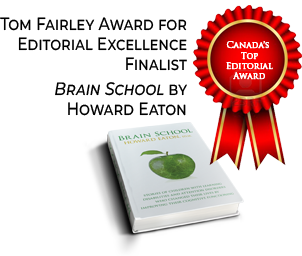cliché (n.)
1825 1. “electrotype, stereotype,” from French cliché, a technical word in printer’s jargon for “stereotype block”; 2. noun use of past participle of clicher “to click” (18th c.) . . . echoic of the sound of a mold striking molten metal. Figurative meaning of “trite phrase, worn-out expression” is first attested in 1888, following the course of the word stereotype. (From the Online Etymology Dictionary)
Cliché. Such an elegant, pretty word. But such a dirty word to a freelance editor like me―clichés abound in the writing I see every day. “Avoid clichés like the plague” is a clarion call stern instruction to all writers, but many find it difficult to do. In this post, I’ll explore why clichés should mostly be avoided as well as what you can do to avoid this writing pitfall and improve your prose at the same time.
Why are clichés so common?
Typically, we draw on a cliché in an attempt to make a more interesting comparison to something mundane in life―often in the form of a simile, metaphor, imagery, or idiomatic saying. Clichés occur in both fiction and nonfiction. They can occur as overused expressions, as idioms, in character, in plot, in setting, and even in the tone of the narrative. They can be old and outdated (lock, stock, and barrel) or they can be newer and hip and cool (epic fail, bling, noob, def). Hundreds of Shakespearean phrases have turned into clichés (wear my heart on my sleeve, wild-goose chase, star-crossed lovers, neither rhyme nor reason). Hollywood movies abound in clichéd characters, settings, and storylines, particularly where love is involved.
Why do authors sometimes gravitate to clichés? Well, because they’re convenient. They’re familiar. They do a passable job of making an analogy readers may relate to, if only because the cliché is so recognizable. And because they come so naturally. Often, we’ve heard them from the time we were born, before we even could understand what the simile or metaphor implied. Remember your mother (or grandfather) saying, “Now, dear, remember, a bird in the hand is worth two in the bush”? Or “the apple doesn’t fall far from the tree” or “you can’t see the forest for the trees”? For years I didn’t know what those meant, but I could recite them like my times tables.
Invisibility and the subtle perception of laziness
Of course, all clichés were once original and so evocative and vibrant at the time of their creation that they ultimately became too popular—and turned into clichés. When they slip into our casual speech, clichés are fine—they express imagery more vividly than anything else we can think of at that moment.
But in original writing, the problem with clichés is that they’re the opposite of original. They’re trite and worn out. They’re jargony. They’re uninteresting. They’re clichéd. And that brings us to the second problem with clichés in writing—they’re so stale they become invisible, and that means there’s little point in writing them. Why write words your readers will just gloss over? As an author, if you use metaphors and similes, you want them to have impact and come alive for readers with purposeful, relevant, surprising, original comparisons.
When writing is fraught with clichés, the subconscious message a discerning reader may receive is that the author was perhaps too lazy to invent something original―and that’s the last thing any author wants his or her readers to think. But laziness is not usually the reason an author slips into clichés; it’s because they come so naturally that often we’re entirely unaware we’re writing them.
Story clichés
Check your writing and see if you can identify any of these common story clichés:
- Having the POV character examine and describe his or her physical features while looking in a mirror. This has been so overdone that most readers know it’s little more than an information dump to tell the reader what the character looks like. Try to find more original, creative ways to convey your main characters’ appearances. Perhaps describe them through the point of view of another character. Or incorporate them organically―here’s an example: She stumbled from the ladder, her hair dragging in the paint can on the floor, the brown strands now streaked with cerulean.
- Opening a scene or story by describing the weather or the landscape. I need go no further than the much derided and parodied opening line from Edward Bulwer-Lytton’s 1830 novel Paul Clifford: “It was a dark and stormy night . . .” Of course, occasionally a cliché becomes so ingrained in our culture that it’s impossible to eradicate. But that doesn’t make it original, which is what you should be striving for in your writing.
- Giving away the plot. “Little did Guinevere know that the Beast of Doom was about to invade her village.” “Little did he/she know” is a fine example of a cliché that greatly weakens fiction. Readers don’t want the story given away until they’ve actually reached that moment in the story. (This is different from subtle foreshadowing, which the reader is often not even aware of until later in the story.)
- Stereotyped or typecast characters. The handsome, brave hero; the strong but feminine, sexy heroine. The one-dimensional evil villain. The struggling artist or writer. It’s too easy to make your protagonist a writer if you are a writer. Don’t always “write what you know.” Explore characters outside of your narrow world. How often do you read a book in which the protagonist works at garbage collection or in a call centre or paints lines on roads for a living? How about a hero who can’t read? It’s more likely the main character has a much more glamorous but stereotyped job at an ad agency or at a publishing house. Instead, try placing a fascinating character in an ordinary job. Or place an ordinary character in a fascinating job. Original writing is about surprising readers with the unexpected.
Clichéd expressions
Perhaps the most common type of cliché is the hackneyed expression. The English language is rife with thousands of these; entire books have been filled with them (reference books, not to mention otherwise well-written novels). A quick Internet search shows one of the most popular volumes to be The Dictionary of Clichés, by James Rogers. If you have a tendency to write in clichés, this may be a useful guide to have at hand.
Here are just a handful of common clichéd expressions: calm before the storm, burning the candle at both ends, actions speak louder than words, looks like death warmed over, walking on eggshells, step up to the plate, throw (someone) under the bus, I hear what you’re saying, can’t wrap my head around it, it’s not rocket science, fake it till you make it, took the wind out of my sails, what goes around comes around, like a breath of fresh air, when all’s said and done, all talk and no action, happy as a clam, guilty as sin, fall head over heels, and countless more. A good Internet resource for checking common clichés is https://www.be-a-better-writer.com/cliches.html.
Corp-speak and journalism-speak
Modern journalism and the corporate world seem to have a particular penchant for hackneyed expressions and jargon that becomes tiresome almost as soon as it catches on. I polled my colleagues and received dozens of vehement responses, confirming that editors have strong feelings about their most-loathed clichés, particularly corp-speak. A few examples: at the end of the day, in the final analysis, 24/7, think outside the box, take it to the next level, up your game, level the playing field (and dozens more sports clichés), iconic anything, leverage, in the current climate, take ownership, pushing the envelope, solution (as a verb: “let’s solution that”), dialogue (as a verb: “let’s dialogue”), action (as a verb: “let’s action that”), drinking the Kool-Aid, paradigm shift, low-hanging fruit, game changer, added value, deliverables, synergy, and on and on ad nauseam. The Office Life has a humorous office jargon dictionary, if you care for a chuckle.
How to avoid clichés and write original prose
As mentioned, clichés are ubiquitous to the point of being invisible. Do you suspect clichés have crept into your writing? If so, how can you avoid them, especially if they’re invisible and you aren’t even aware of them as you’re writing them? Here are a few techniques for finding and fixing clichés.
- Find: Read out loud for clichés. Reading aloud is recommended at every stage of your writing, but in this case, do a read specifically targeting clichés. The very sound of them will be so familiar to you that you may be more likely to catch them when hearing them than when seeing them in print.
- Find: Do a full silent read-through for clichés. Again, examine your prose line by line for clichés, and nothing else. Question every image and comparison you’re trying to make. If something sounds familiar, it’s possible it’s a cliché. If you’re unsure, put the phrase and the word “cliché” into an Internet search and you’ll quickly have your answer. Then eradicate the offender.
- Find: Play “spot the cliché” with a friend. Have someone else read your work while on the lookout for these offenders. That person doesn’t have to be an editor; even a friend or acquaintance is more likely to pick out your clichés than you are.
- Fix: Consider the real meaning of the cliché. Once you’ve spotted a cliché, break it down. Often, as soon as you delve into the actual, literal meaning of the cliché, you’ll be able to think of another way to say it. Grab a thesaurus and find synonyms for the key words in the cliché to create your own original analogy and imagery.
- Fix: Think like your POV character. In nonfiction, think like your audience. How would your protagonist (or your audience) describe the thing or scene at hand? For example, someone with a science background would probably describe a lightning storm quite differently than an artist or poet or trucker (excuse my stereotypes). Remember that children and teens view the world differently from adults.
- Fix: Make your comparisons relevant. One of the most effective ways to create a strong simile, metaphor, or imagery is to make your comparison relevant to the scene, mood, and character. For example, I love this evocative sentence by Kathy Flake (who writes as Kathryn Barrett) in her poignant tribute to her late mother-in-law, a quilter: “Her wit was sharp and often pointed, like the scissors she used to cut the fabric of her quilts.”
- Fix: Give readers the unexpected. Avoid writing anything so predictable that readers can guess the outcome, whether it’s a character, scene, or an entire story. Flip predictability on its head. If your POV character is a tough guy, place him in a flower shop or a preschool daycare. If your story has a dark undercurrent, place some scenes in Disneyland. If your protagonist is from a farming village, given her an air of sophistication that will leave readers puzzled—until you eventually work the reason into the plot, of course.
POV and clichés
Recently, one of my authors asked how he could avoid clichés when his protagonist, his main POV character, actually thought in clichés. If he (the author) wrote original metaphors, would that not sound like an omniscient narrator rather than the deep third-person POV he wanted for his protagonist?
That was a tough question. Yes, you want verisimilitude when writing your POV characters. If they think in clichés, their internal monologue needs to reflect that. However, it’s important to remember that writing fiction is a fine balance between art and artifice. In real life, your POV character may constantly think in clichés. But fiction is an art form, and in every art form there is an element of controlled artifice, of artificiality and falseness. The goal of every great author is to strike a fine balance between the realism of life and the artifice of the fiction medium. Thus, you sit on the fence between art―creating original metaphors―and artifice―giving your POV character original metaphors that may not exactly be in his “voice,” and that border on omniscient narration. In other words, you somewhat sacrifice the clichéd thoughts your POV character might have in real life for original metaphors that you weave into your fiction. It’s a fine balance, not an either-or situation. Always keep in mind that original metaphors are a hallmark of great writing, especially if they can be woven into the POV character’s way of thinking.
More examples of originality with metaphor and simile
One of my authors, BK Mayo, created remarkably original, relevant imagery with similes, metaphors, and comparisons in his compelling novel Tamara’s Child. The novel is mostly, though not entirely, written from the perspectives of a naïve teenaged girl and boy. Here are a few examples:
- Her face was blotchy-white and bloated, like the bellies of the dead guppies she’d once seen floating on the surface of Nana’s fish tank.
- . . . summer had clamped down on the valley like a grandma’s hug.
- A stench like the breath of a flesh-eating dragon permeated the pen. Garbage halitosis, his dad called it.
- Because during moments such as this, trapped inside the closet of her mind, she had the awful feeling that coming to live with Gary was like having checked into a hotel without the means to pay the bill at the stay’s end.
- He was a colossal oaf who leered at her stupidly as if she were the prize at a carnival game booth.
- Despair . . . takes its toll on you like a constant wind that erodes layer upon layer of topsoil until it has eaten down to rock and hardpan. Despair exposes the bones of a man’s soul.
- . . . the city streets at this late hour were as dark and silent as a broken promise.
- Then he stood there with his hands in his pockets, like a boy at his first dance.
- He was tall and gaunt, and despite his dignified bearing, looked careworn, like a well-used Bible.
- She looked terrible. Her hair reminded Kurt of feathers on a molting bird. Her face was the color of cooked oatmeal. And she seemed diminished in stature―not just thinner, but smaller, like really old people get as they fade toward death.
In conclusion
Some editors and authorities on writing will tell you to eradicate all metaphors and similes from your writing, including clichés. I disagree with that kind of prescriptivism. Besides, it’s not always possible or even advisable to avoid all clichés in writing. Occasionally a cliché hits just the right note, particularly in fiction dialogue, where the writing should reflect the way your characters naturally speak or think (people do speak and think in clichés a lot). But as an editor, little lifts my editorial sensibilities more than an original, relevant, well-thought-out metaphor or simile, a turn of phrase that helps me visualize what’s being described better than the ordinariness of the thing or situation itself.
I’d like to hear from you! If you’ve read any clichés in plot, character, setting, tone, or expression you’d like to get off your chest share, please drop me a line do so in a comment below.





12 Responses
A great resource for fiction writers, Arlene, and an excellent reminder to be extra vigilant about looking for cliches and ridding your writing of them. It’s true that the pesky things can be nearly invisible. I love BK Mayo’s similes. We should all be able to write with such flair and originality!
Thanks for your comment, Caroline! And for your compliments. It’s true that some cliches are so invisible that even editors miss them if we’re not vigilant. And I’ll pass along the compliment to BK Mayo. I worked on his manuscript about four years ago, yet his similes and metaphors were so original and beautiful that I recalled them vividly all this time later when I decided to write on this topic.
This is a great piece, Arlene, and covers pretty much everything that needs to be remembered by writers who find themselves on the way to the library of tired language. As Caroline points out, it’s a wonderful resource from an interesting and informative new perspective. I’m especially pleased to see you take on “corp-speak and journalism-speak” – the two worlds that ironically see themselves as being on the “cutting edge” of business and information. More often, it’s the bland leading the bland.
I read somewhere recently that using clichés is like wearing someone’s old, worn-out clothes that will never fit right nor do anything to enhance personal presentation.
BK Mayo’s use of similes and metaphors are intensely visual and a wonderful anchor with which to set his characters into his story.
Your post is an excellent reminder of the importance of being true to personal style.
Thanks for your feedback, Irene. And thank you for pointing out the irony between the “cutting edge” industries of business and journalism juxtaposed with the weak, bland, worn-out language they use. I hadn’t thought of that comparison!
I’ll also pass your compliments on to BK Mayo. I know he’ll be delighted.
Great blog entry. Why do some writer authorities say to eradicate simile and metaphors? I have been told that too. Human beings tend to communicate with comparisons. It’s how our circuitry works. Used properly, it conserves words, adds flavor to a juicy recipe, and spices up life in a manuscript (cliche intended). Corp-speak? To me Corp-speak always sounds like a B flat in a B minor key – a little dissonance I would rather not hear. The one I like lately is ‘running your organization lean.’ It’s a cliche with a trend in management these days. Consultants even provide advice to managers about being lean. It really means working your employees harder without extra pay. The beauty of comparisons via metaphors and similes is that their interpretations vary between people – poetry. Although, a B flat in a D major is perfectly acceptable (think blues scale) so context matters. Keep up the blog entries! They provide excellent advice.
Thanks for your comment, Thomas, and your compliment. You make an excellent point about how we humans tend to communicate with comparisons. It’s natural, instinctive almost, and there’s poetry in such comparisons. I wish I’d thought of that to add to my article. For those reasons, it would neither be practical nor advisable to prescribe that authors wipe out all similes, metaphors, and imagery from their writing. The beauty is, as you say, that interpretations can vary widely among readers. There’s little better than writing that stirs readers’ imaginations with evocative imagery.
Your comparison of corp-speak with dissonance music is a great example. It made me think. It lit up my imagination. It actually made me run to the piano to hear the dissonance for myself. (Although wouldn’t it depend on whether you’re talking about the B minor harmonic or melodic scale? But that’s for another discussion!)
You are right! One can use a B flat in B minor key. I was using that analogy because I was putting a B flat in something I was writing, which I thought was in B minor, and it wasn’t working…it sounded horrible. My bad. So there is a lesson, think about ones comparisons because they might mean something else to other people.
It’s true, Thomas. The analogies and comparisons should not only be relevant to the character, the setting, and the tone of the writing, but they should, if possible, create imagery that is broadly understood by most of your readers.
Great blog post!
Thanks, Kevin!
Hi Arlene….Since I am beginning my last proof-reading, I am taking into account everything you said about “cliches.” I do, however, agree with you when you state that there are times when a good cliche is useful…or as I would put it…” what the doctor ordered.” HAAA! It is difficult to avoid all cliches since that is how the reader speaks and therefore how he identifies with the story. I am storing all the information in your blogs and hopefully, putting them to good use…Thanks again . June Schiavoni